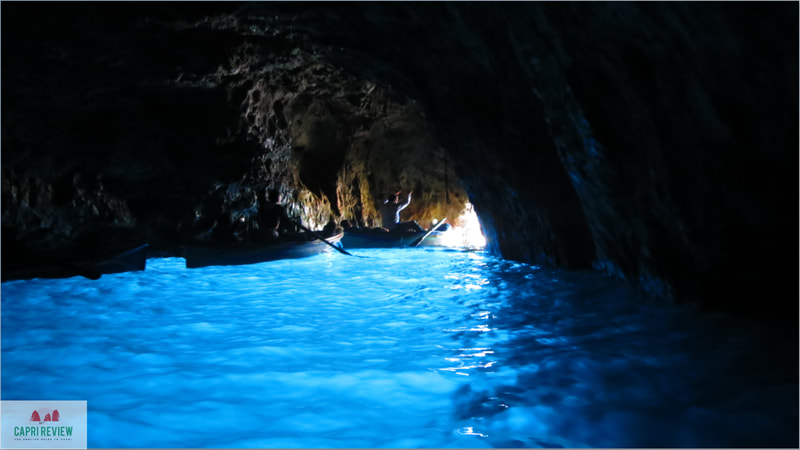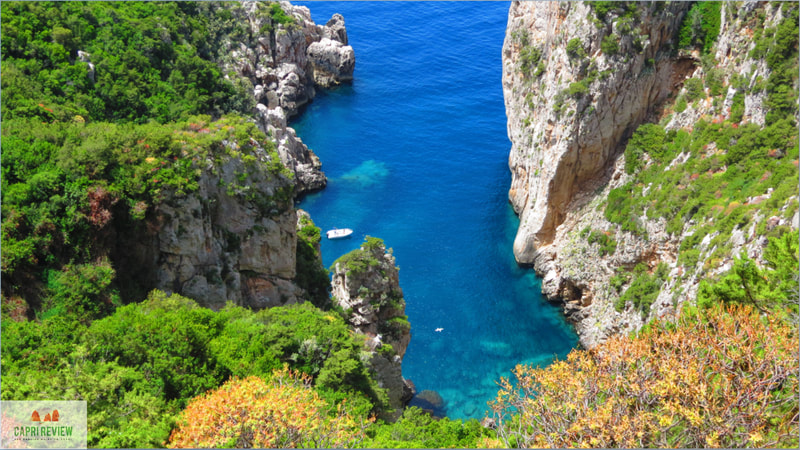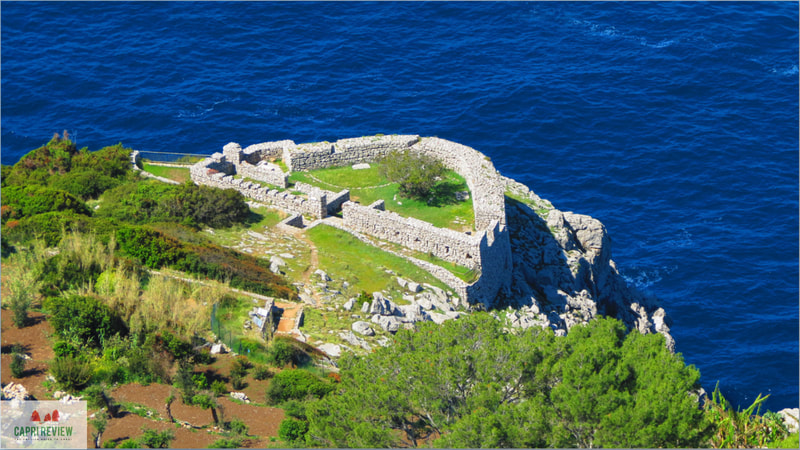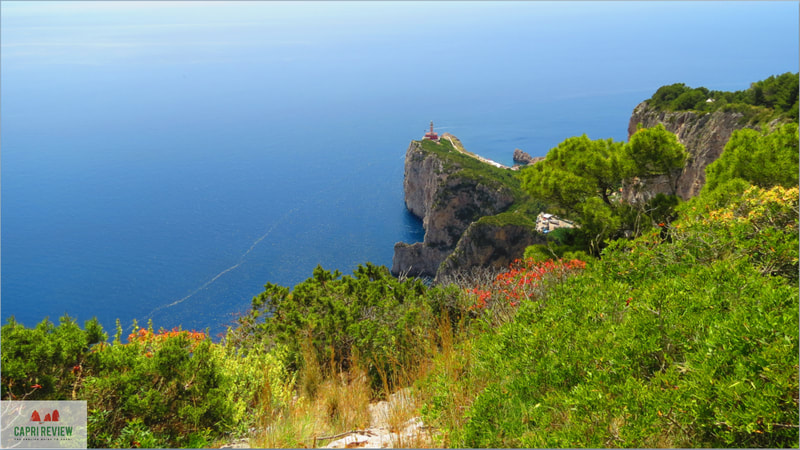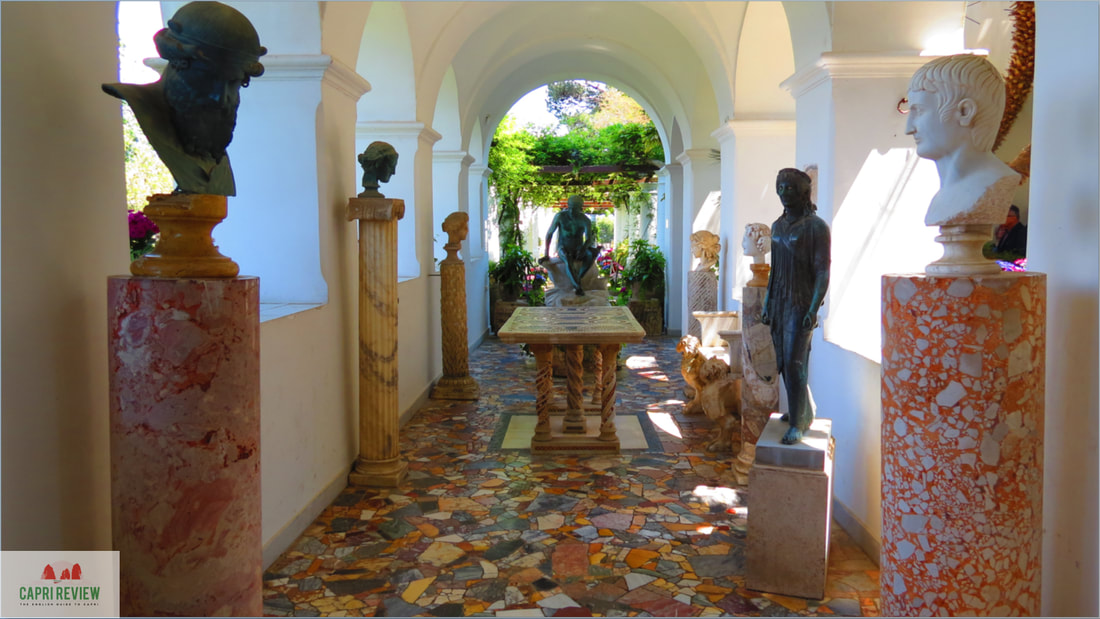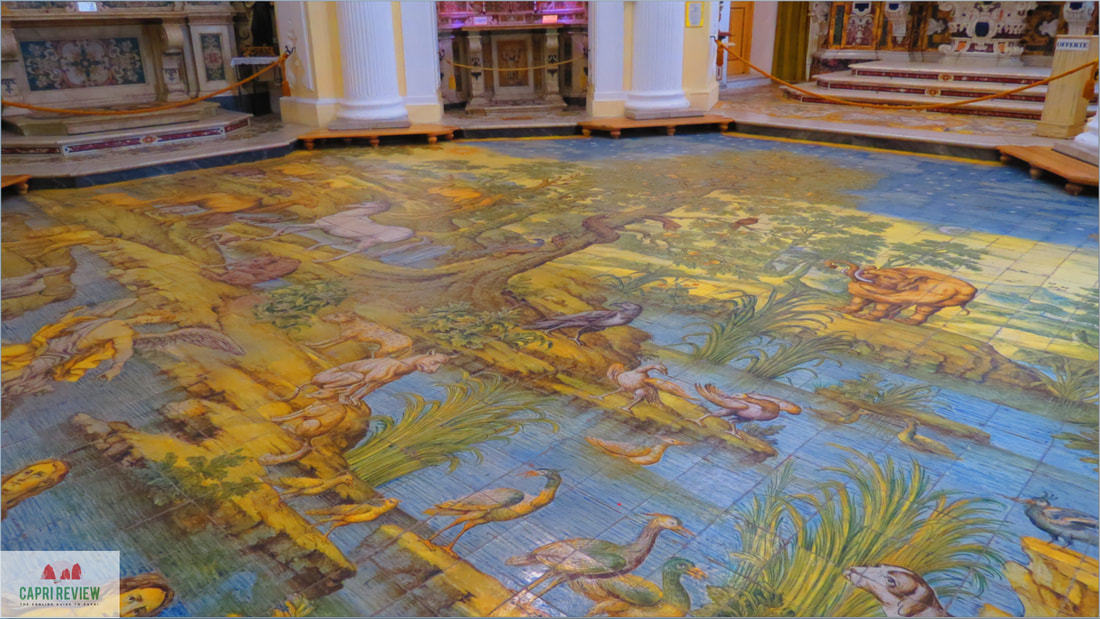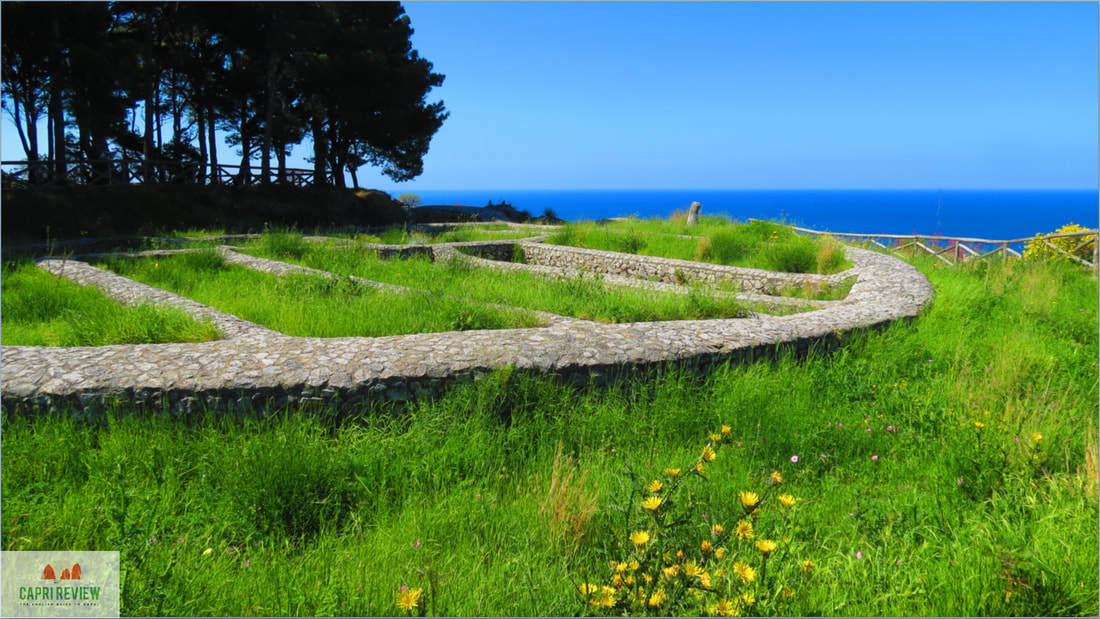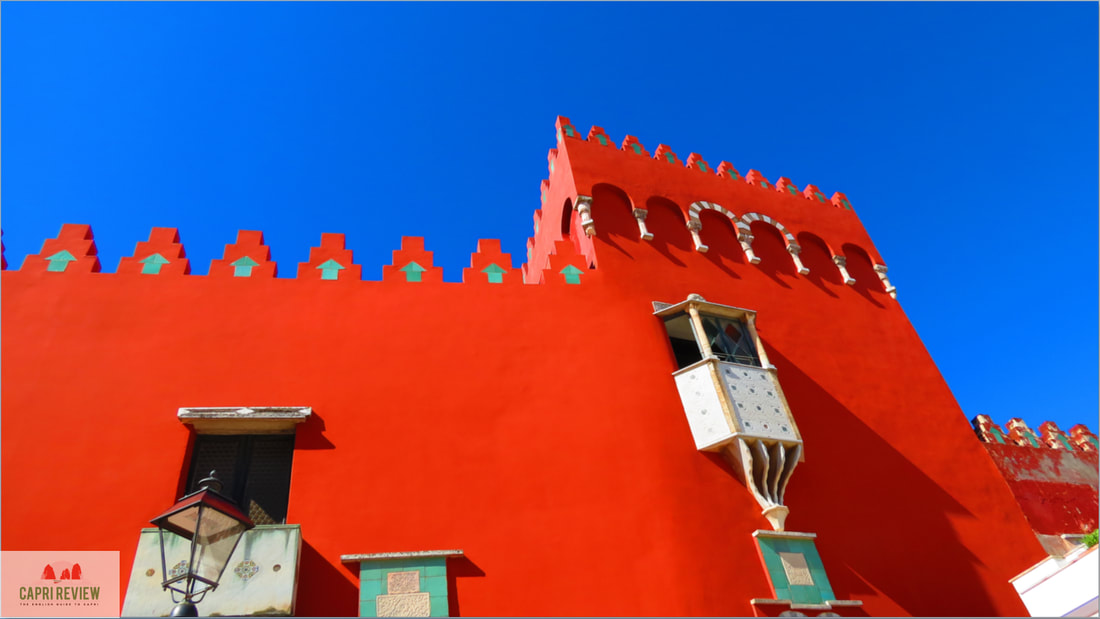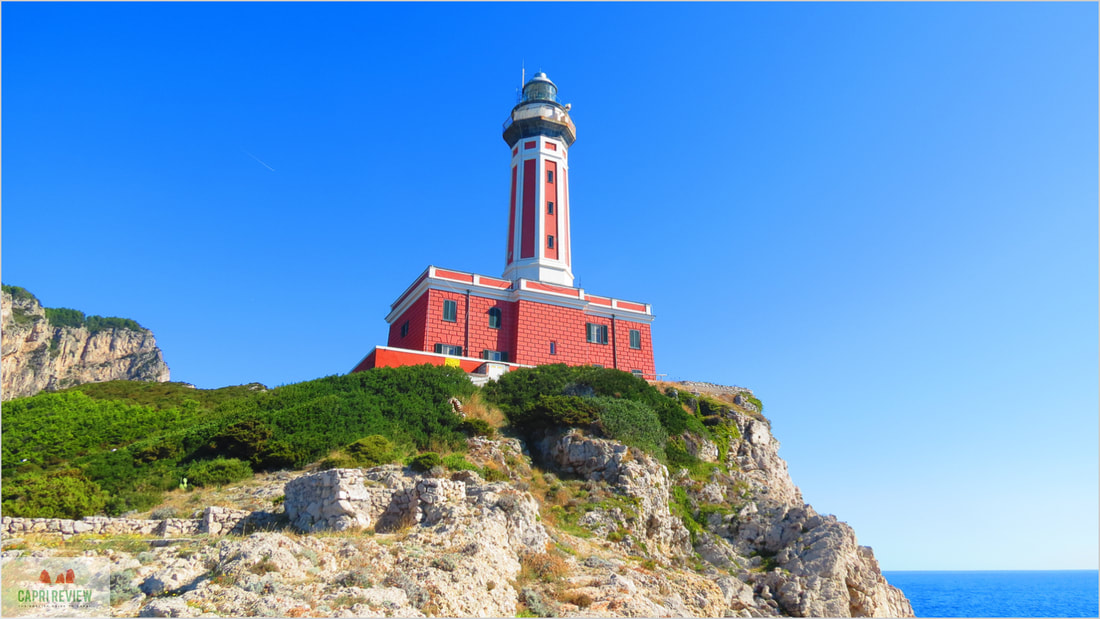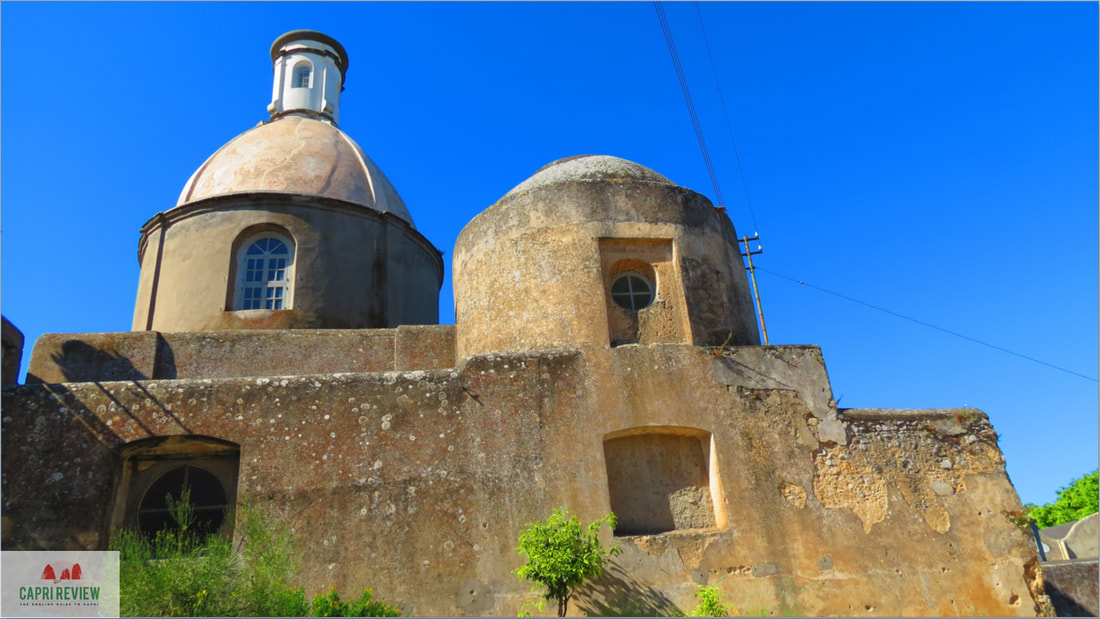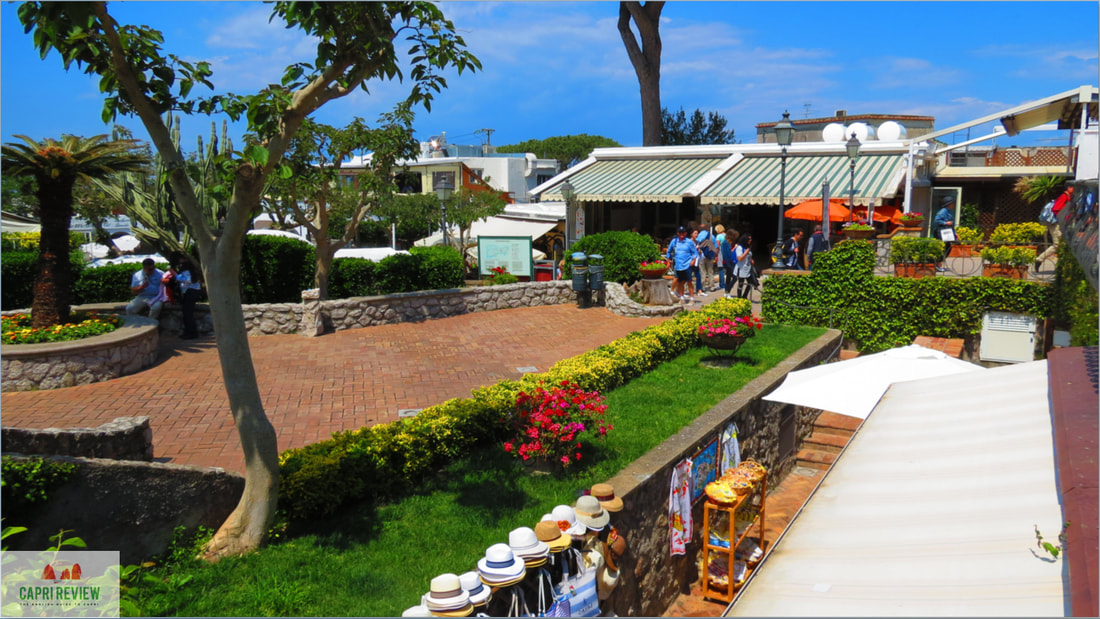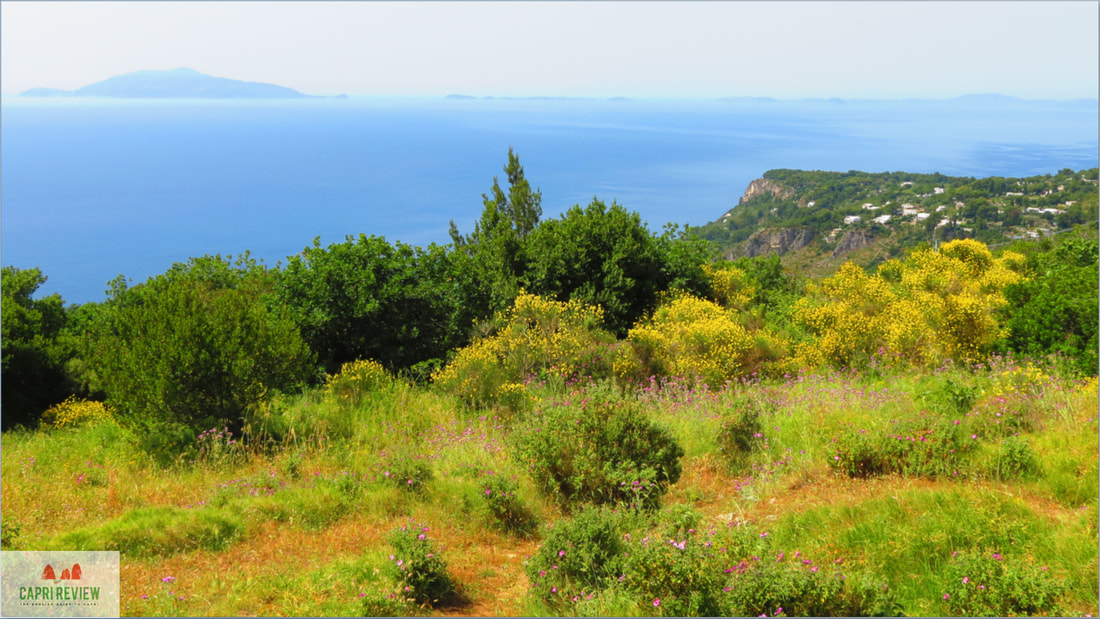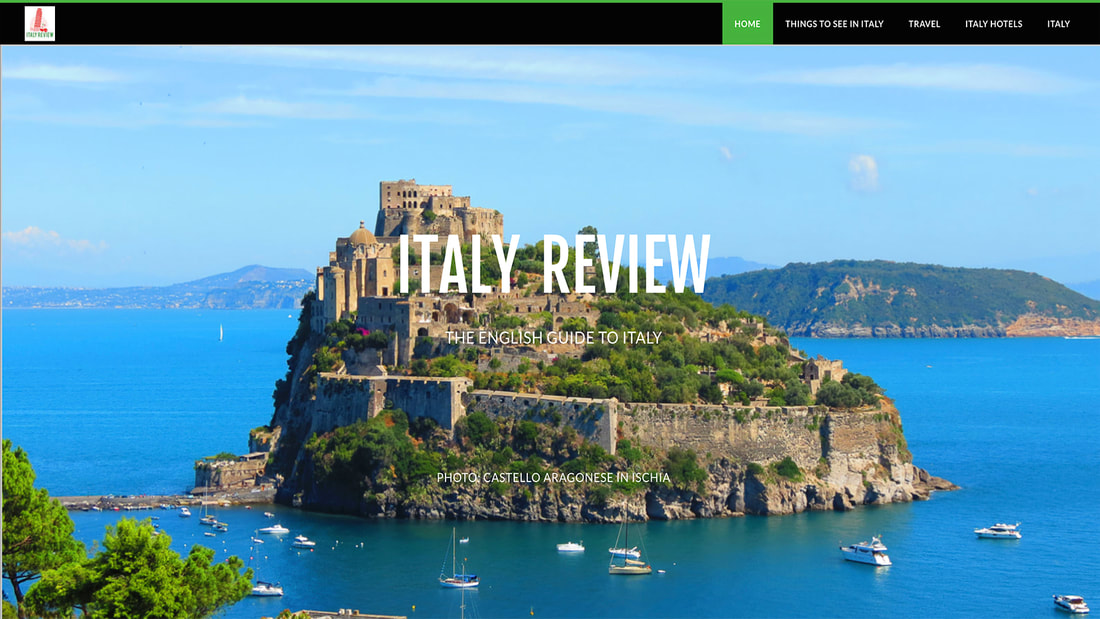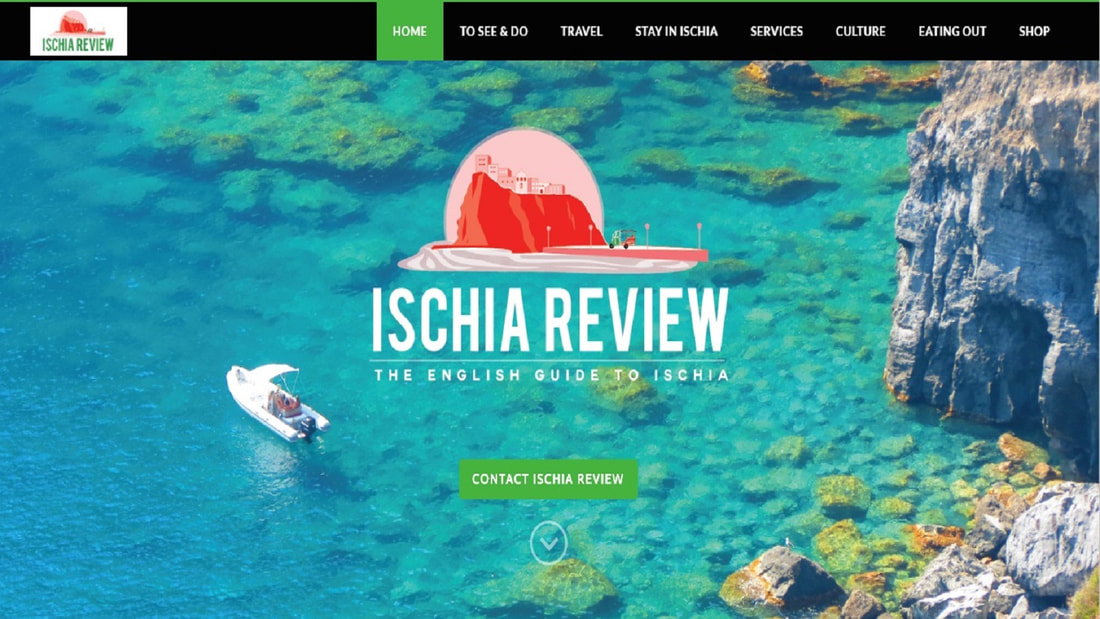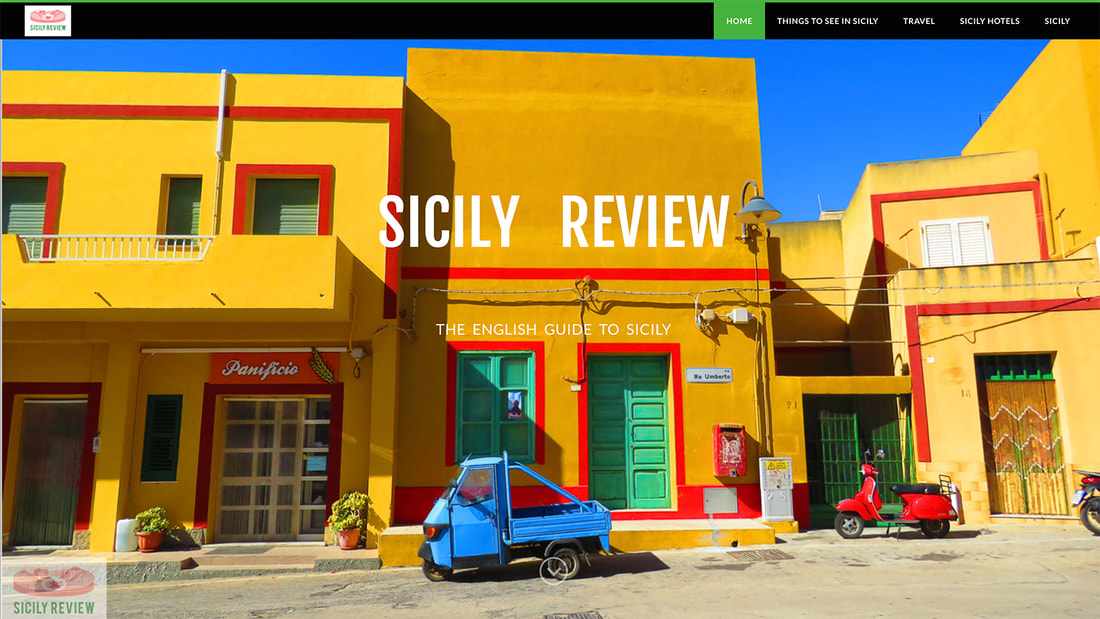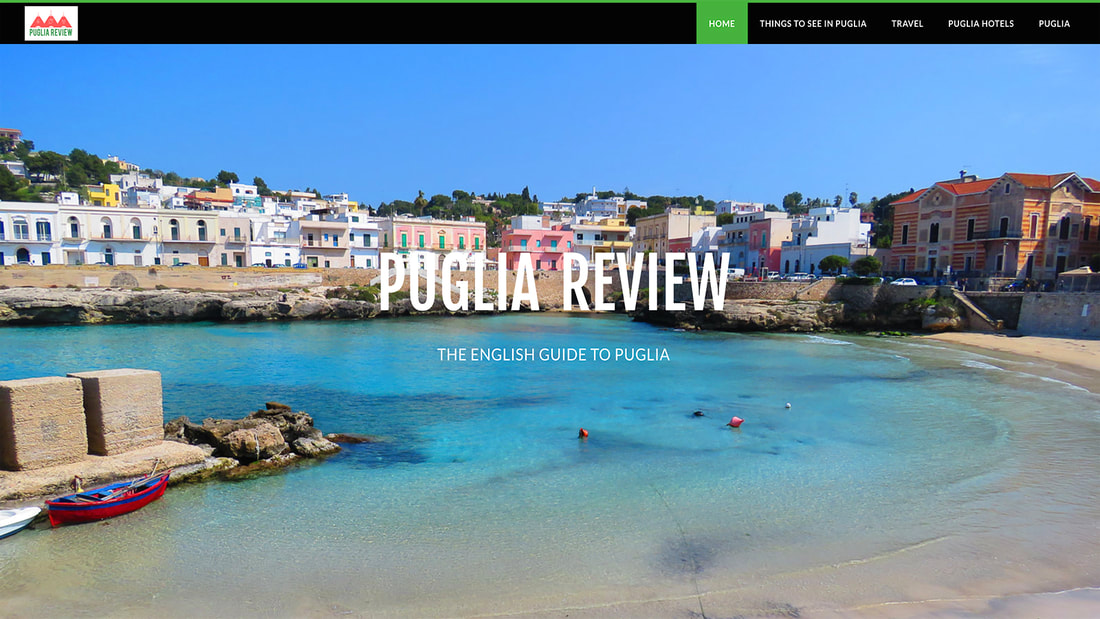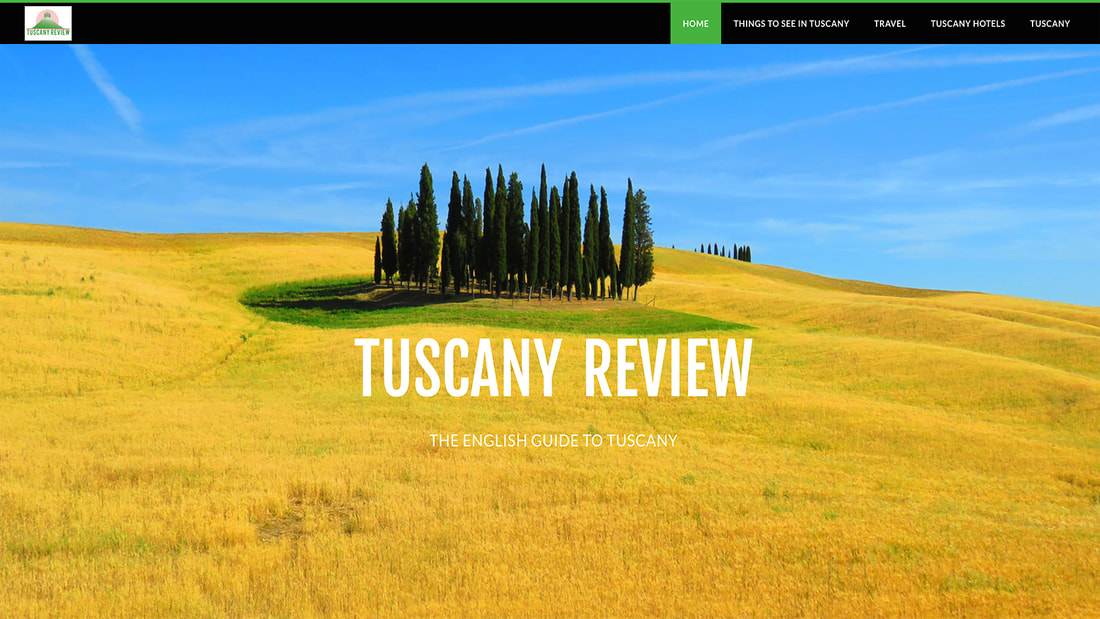Anacapri
Latest update: 1 February 2024
|
The western half of the island of Capri is called Anacapri and the origins of its name describe its location rather well.
The prefix of "ana" means "up", or in this case "upper" which gives us Anacapri or "Upper Capri". If you look at a satellite image of the island from above, you can clearly see the difference between the more elevated Anacapri and the lower Capri Town to its east. The highest peak in Anacapri is that of Mount Solaro which soars to a maximum elevation of 589 metres above sea level. |
Related links
There are just two main towns on the island which are both classed as a comune, similar to a borough or local municipality. The Comune of Anacapri has a population of just under seven thousand which is almost identical to that of the Comune of Capri.
The two sides or the two towns of Capri are connected by a rather remarkable road: the Via Provinciale Anacapri is the route taken by the island's buses from the bus stop in Capri Town up to Piazza Vittoria in Anacapri. Everyone who takes that bus ride remembers it because the tiny buses have to somehow wind their way up the steep mountain road as it hugs to the side of the cliff. At a certain point, it often feels as something has gone wrong as the bus sways around a hairpin bend revealing an at once terrifying but beautiful panorama.
There is an alternative to the bus ride: the Phoenician Steps start down at Marina Grande and are quite an energy-sapping option, especially in the summer heat, which is why most people take the bus. The buses arrive at Piazza Vittoria where there's always quite a lot going on. Several bus routes pass through this square from which you can also travel down to the Punta Carena Lighthouse area to enjoy the beaches there, or take a slightly different route to reach the Blue Grotto by land. Most people take one of the boat excursions from Marina Grande but doing it this way can save you a little bit of money and occasionally some time; although during the peak summer times the queues for the Grotto are long no matter which way you approach it.
Back at Piazza Vittoria, you can cross the road and walk into the main town area where you'll find a number of shops, bars and restaurants. Anacapri is quieter than Capri Town as it takes that little extra effort to get here but many people prefer the more open spaces that you can find on this side of the island. The town centre area has a couple of landmarks to discover; first among those is the Chiesa di San Michele Arcangelo which is famous for its stunning floor of majolica tiles. Another church, the Chiesa di Santa Sofia is also worthy of some exploration along with the small museum called the Casa Rossa, a bright red building that's impossible to miss.
For many people, the main purpose of the journey to Anacapri is to see the Villa San Michele. The beautiful villa is indeed one of the major attractions on the island and is just a few steps from the bus stop at Piazza Vittoria. From the centre of the square you pass along a narrow lane flanked with boutiques and craft shops which themselves are something of a tourist attraction. At the end of this narrow lane you can get one of the best views of the island: looking down to Marina Grande and across to Capri Town from what is the top of the Phoenician Steps.
Despite being a relatively small square, there is yet more to be seen from Piazza Vittoria. Another of the major activities on the island is to take the chairlift up to the top of Mount Solaro and it's from this square that you take your seat. The alternative to the chairlift is to take the scenic hiking route to the top but this will take several hours and is only feasible if you have more than a day on the island. Whichever route you take, the area at the top of the mountain is beautiful with some breathtaking panoramas and a meadow known as Cetrella where you'll find the Casa Mackenzie and the Hermitage of Santa Maria a Cetrella.
You can also take another hiking route up to the Capri Philosophical Park which is close to another spectacular viewing area known as the Belvedere di Monte Tuono at Migliera. There are also the ruins of Villa Damecuta which dates back to Roman times while from a more recent historical period, you'll find the coastal edges of Anacapri fringed by a series of watchtowers called the English Forts.
The two sides or the two towns of Capri are connected by a rather remarkable road: the Via Provinciale Anacapri is the route taken by the island's buses from the bus stop in Capri Town up to Piazza Vittoria in Anacapri. Everyone who takes that bus ride remembers it because the tiny buses have to somehow wind their way up the steep mountain road as it hugs to the side of the cliff. At a certain point, it often feels as something has gone wrong as the bus sways around a hairpin bend revealing an at once terrifying but beautiful panorama.
There is an alternative to the bus ride: the Phoenician Steps start down at Marina Grande and are quite an energy-sapping option, especially in the summer heat, which is why most people take the bus. The buses arrive at Piazza Vittoria where there's always quite a lot going on. Several bus routes pass through this square from which you can also travel down to the Punta Carena Lighthouse area to enjoy the beaches there, or take a slightly different route to reach the Blue Grotto by land. Most people take one of the boat excursions from Marina Grande but doing it this way can save you a little bit of money and occasionally some time; although during the peak summer times the queues for the Grotto are long no matter which way you approach it.
Back at Piazza Vittoria, you can cross the road and walk into the main town area where you'll find a number of shops, bars and restaurants. Anacapri is quieter than Capri Town as it takes that little extra effort to get here but many people prefer the more open spaces that you can find on this side of the island. The town centre area has a couple of landmarks to discover; first among those is the Chiesa di San Michele Arcangelo which is famous for its stunning floor of majolica tiles. Another church, the Chiesa di Santa Sofia is also worthy of some exploration along with the small museum called the Casa Rossa, a bright red building that's impossible to miss.
For many people, the main purpose of the journey to Anacapri is to see the Villa San Michele. The beautiful villa is indeed one of the major attractions on the island and is just a few steps from the bus stop at Piazza Vittoria. From the centre of the square you pass along a narrow lane flanked with boutiques and craft shops which themselves are something of a tourist attraction. At the end of this narrow lane you can get one of the best views of the island: looking down to Marina Grande and across to Capri Town from what is the top of the Phoenician Steps.
Despite being a relatively small square, there is yet more to be seen from Piazza Vittoria. Another of the major activities on the island is to take the chairlift up to the top of Mount Solaro and it's from this square that you take your seat. The alternative to the chairlift is to take the scenic hiking route to the top but this will take several hours and is only feasible if you have more than a day on the island. Whichever route you take, the area at the top of the mountain is beautiful with some breathtaking panoramas and a meadow known as Cetrella where you'll find the Casa Mackenzie and the Hermitage of Santa Maria a Cetrella.
You can also take another hiking route up to the Capri Philosophical Park which is close to another spectacular viewing area known as the Belvedere di Monte Tuono at Migliera. There are also the ruins of Villa Damecuta which dates back to Roman times while from a more recent historical period, you'll find the coastal edges of Anacapri fringed by a series of watchtowers called the English Forts.
|
Island: Capri
Region: Campania Province: Metropolitan City of Naples Population: 6,960 Recommended accommodation: Hotel Orsa Maggiore |

